Tag Archives: generative ai
Encoder Only Transformer Models Quiz / Q&A

Are you intrigued by the revolutionary world of transformer architectures? Have you ever wondered how encoder-only transformer models like BERT, ELECTRA, or DeBERTa have reshaped the landscape of Natural Language Processing (NLP)? The rapid advancement of machine learning has led to the creation of numerous transformer architectures, each with unique features, applications, and underlying mechanics. Whether you’re a data scientist, machine learning engineer, generative AI enthusiast, or a student eager to deepen your understanding, this quiz offers an engaging and informative way to assess your knowledge and sharpen your skills. It would also help you prepare for your interviews on this topic. Encoder-only transformer models have become a cornerstone in …
OpenAI GPT-3 Models List: Explained with Examples
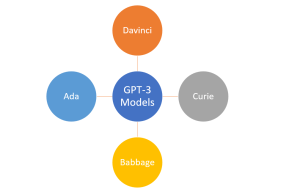
In the ever-evolving landscape of natural language processing (NLP), OpenAI’s GPT-3 models have garnered significant attention for how they could understand and generate human-like text. Different GPT-3 models discussed in this blog can be accessed using APIs and OpenAI Playground. In this blog post, we will delve into the OpenAI GPT-3 models and provide a comprehensive list, along with explanations and examples of their capabilities. Although GPT-3.5 models are more powerful than their counterpart GPT-3 models, it is only these GPT-3 models which are currently available for fine-tuning. Whether you are an experienced data scientist or a curious generative ai enthusiast, understanding these models is crucial in making the most …
LLM Chain OpenAI Python Example
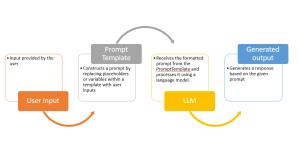
Have you ever wondered how to fully utilize large language models (LLMs) in our natural language processing (NLP) applications, like we do with ChatGPT? Would you not want to create an application such as ChatGPT where you write some prompt and it gives you back output such as text generation or summarization. While learning to make a direct API call to an OpenAI LLMs is a great start, we can build full fledged applications serving our end user needs. And, building prompts that adapt to user input dynamically is one of the most important aspect of an LLM app. That’s where LangChain, a powerful framework, comes in. In this blog, …
Langchain ChatGPT Hello World Python Example
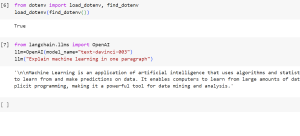
Have you ever wondered how to build applications that not only utilize large language models (LLMs) but are also capable of interacting with their environment and connecting to other data sources. If so, then LangChain is the answer! In this blog, we will learn about what is LangChain, what are its key aspects, how does it work. We will also quickly review the concepts of prompt, tokens and temperature when using the OpenAI API. We will the learn about creating a ‘Hello World’ Python program using LangChain and OpenAI’s Large Language Models (LLMs) such as GPT-3 models. What is LangChain Framework? LangChain is a dynamic framework specifically designed for the …
Encoder-only Transformer Models: Examples
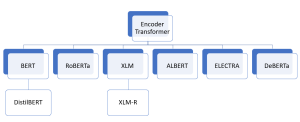
How can machines accurately classify text into categories? What enables them to recognize specific entities like names, locations, or dates within a sea of words? How is it possible for a computer to comprehend and respond to complex human questions? These remarkable capabilities are now a reality, thanks to encoder-only transformer architectures like BERT. From text classification and Named Entity Recognition (NER) to question answering and more, these models have revolutionized the way we interact with and process language. In the realm of AI and machine learning, encoder-only transformer models like BERT, DistilBERT, RoBERTa, and others have emerged as game-changing innovations. These models not only facilitate a deeper understanding of …
LLMs & Semantic Search Course by Andrew NG, Cohere & Partners
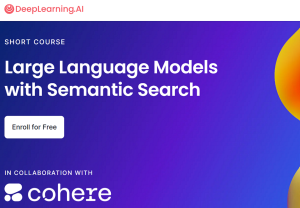
Andrew Ng, a renowned name in the world of deep learning and AI, has joined forces with Cohere, a pioneer in natural language processing technologies. Alongside him are Jay Alammar, a well-known educator and visualizer of machine learning concepts, and Serrano Academy, an esteemed institution dedicated to AI research and education. Together, they have launched an insightful course titled “Large Language Models with Semantic Search.” This collaboration represents a fusion of expertise aimed at addressing the growing needs of semantic search in various applications. In an era where keyword search has dominated the search landscape, the need for more sophisticated, content-aware search capabilities is becoming increasingly evident. Content-rich platforms like …
Quiz: BERT & GPT Transformer Models Q&A

Are you fascinated by the world of natural language processing and the cutting-edge generative AI models that have revolutionized the way machines understand human language? Two such large language models (LLMs), BERT and GPT, stand as pillars in the field, each with unique architectures and capabilities. But how well do you know these models? In this quiz blog, we will challenge your knowledge and understanding of these two groundbreaking technologies. Before you dive into the quiz, let’s explore an overview of BERT and GPT. BERT (Bidirectional Encoder Representations from Transformers) BERT is known for its bidirectional processing of text, allowing it to capture context from both sides of a word …
Pre-training vs Fine-tuning in LLM: Examples
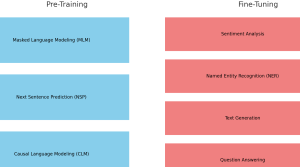
Are you intrigued by the inner workings of large language models (LLMs) like BERT and GPT series models? Ever wondered how these models manage to understand human language with such precision? What are the critical stages that transform them from simple neural networks into powerful tools capable of text prediction, sentiment analysis, and more? The answer lies in two vital phases: pre-training and fine-tuning. These stages not only make language models adaptable to various tasks but also bring them closer to understanding language the way humans do. In this blog, we’ll dive into the fascinating journey of pre-training and fine-tuning in LLMs, complete with real-world examples. Whether you are a …
Top 5 Books on Generative AI: New Releases on Amazon

Are you fascinated by the potential of generative artificial intelligence (AI)? Are you looking for the latest insights and knowledge in the field of AI and its creative applications? Look no further! In this blog post, we’ll introduce you to the top 5 books on generative AI that have been making waves on Amazon in the last 90 days. These books delve into various aspects of generative AI, offering readers a comprehensive understanding of its implications, applications, and transformative power. 1. The Artificial Intelligence and Generative AI Bible: [5 in 1] The Most Updated and Complete Guide Author: Alger Fraley Rating: 4.4 Step into the world of generative AI with …
GPT Models In-context Learning: Examples
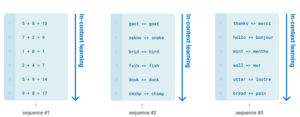
Have you ever wondered how AI models like OpenAI GPT-3 (Generative Pretrained Transformers-3) can generate impressively human-like text? Enter the realm of in-context learning that gives GPT-3 its conversational abilities and makes it extraordinary. In this blog, we’re going to learn the concepts of in-context learning, its different forms, and how GPT-3 uses it to revolutionize the way we interact with AI. What’s In-context Learning? In-context learning is at the heart of these large language models (LLMs), enabling GPT models to understand/comprehend and create text that closely resembles human speech, based on the instructions and examples they’re provided. As the model learns about the context based on the examples provided …
DCGAN Architecture Concepts, Real-world Examples
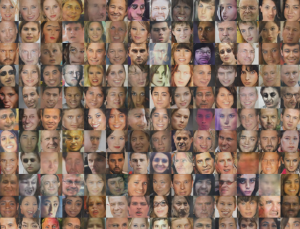
Have you ever wondered how AI can create lifelike images that are virtually indistinguishable from reality? Well, there is a neural network architecture, Deep Convolutional Generative Adversarial Network (DCGAN) that has revolutionized image generation, from medical imaging to video game design. DCGAN’s ability to create high-resolution, visually stunning images has brought it into great usage across numerous real-world applications. From enhancing data augmentation in medical imaging to inspiring artists with novel artworks, DCGAN‘s impact transcends traditional machine learning boundaries. In this blog, we will delve into the fundamental concepts behind the DCGAN architecture, exploring its key components and the ingenious interplay between its generator and discriminator networks. Together, these components …
GAN vs VAE: Differences, Similarities, Examples
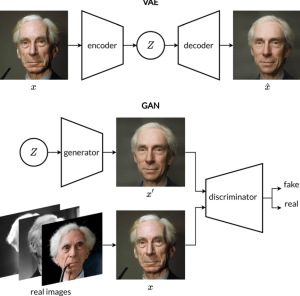
Are you curious about how machines not only learn from data but actually create it? Have you ever found yourself puzzled while trying to choose between Generative Adversarial Networks (GANs) and Variational Autoencoders (VAEs) for your project? Or, even trying to understand when to use GANs or VAEs? Well, you’re not alone! In this blog post, we’re going to learn about two key technologies GANs vs VAEs in the generative modeling, comparing their strengths, weaknesses, and everything in between. We will dive into real-life scenarios, showing when you might want to pull out GANs to generate high-quality, realistic images, and when you’d prefer the control that VAEs provide over the …
ChatGPT Prompts Design Tips & Examples
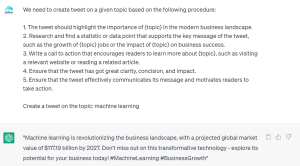
Are you looking to unlock the full potential of ChatGPT? Do you want to learn how to design & create engaging and effective prompts that can help you generate high-quality responses? Look no further! In this blog, we’ll share some expert tips and examples on how to design ChatGPT prompts that get the most out of this powerful language model. As one of the most advanced large language models available today, ChatGPT has the ability to generate informative and engaging responses. But the key is to provide clear instructions and ask right questions if we want to get the best results. That’s where prompt design & engineering comes in. By …
Microsoft Designer: Transforming Design with AI

Are you looking for a hassle-free and smart way to make impressive designs without any graphic design expertise? Then Microsoft’s newly launched tool, Microsoft Designer, may just be the answer. The realm of digital design welcomes a new entrant that promises to revolutionize the way we create – Microsoft’s latest offering, Microsoft Designer. Drawing parallels with the popular tool Canva, Microsoft Designer is an innovative platform that brings effortless design capabilities to your fingertips. This user-friendly, AI-powered design platform caters to an extensive array of users, from entrepreneurs and marketers to educators and students, and even to social media enthusiasts. Whether you are a seasoned professional looking to expedite your …
How to Access GPT-4 using OpenAI Playground?

How good it would be if we could access GPT-4 using the OpenAI Playground and harness the groundbreaking advancements OpenAI has made in generating human-like text? OpenAI has revolutionized the field of natural language processing (NLP) with its large language models (such as different versions of GPT-3.5), and the release of GPT-4 has further pushed the boundaries of what’s achievable. In this blog post, we will guide you through a step-by-step process to access GPT-4 model using the OpenAI playground. Step 1: Visit the OpenAI Playground To get started, open your web browser and navigate to the OpenAI Playground website. The URL for the OpenAI Playground is https://playground.openai.com/. Step 2: …
Azure OpenAI Service Details & Pricing Info
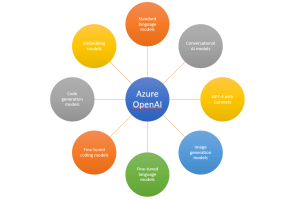
Azure OpenAI, an offering from Microsoft Azure, empowers developers, researchers, and enterprises with the transformative capabilities of Artificial Intelligence (AI). In this blog post, we explore Azure OpenAI’s service details and pricing information, providing you with insights to harness the immense power of AI. Azure OpenAI Services Information Azure OpenAI service provides a range of large language models from standard machine learning models to fine-tuned ones for specific tasks. We can build intelligent chatbots, automate code generation, or enhance natural language understanding. We can leverage conversational AI models for interactive virtual assistants that elevate user experiences and streamline operations. Image generation models can be used to produce stunning, realistic visuals. …
I found it very helpful. However the differences are not too understandable for me